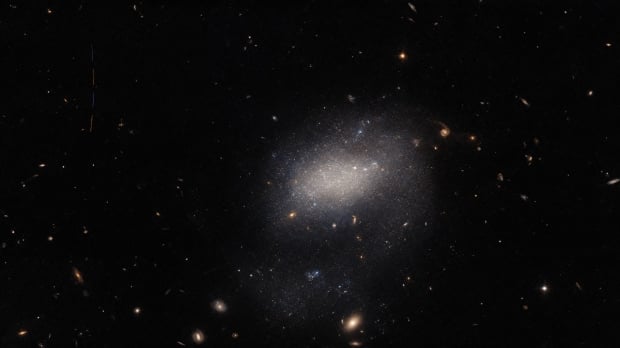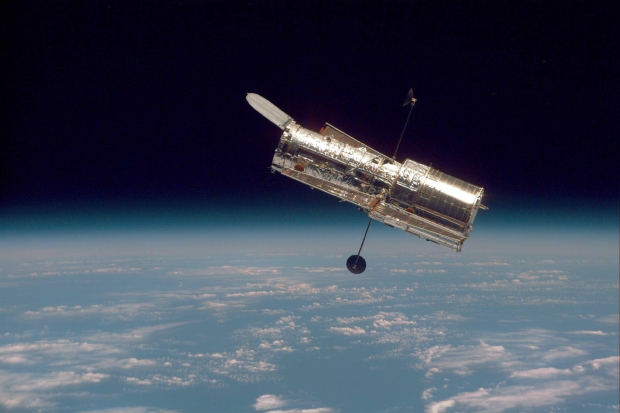A rogue asteroid has been spotted photo-bombing NASA's Hubble Space Telescope's field of view as it attempts to observe a nearby galaxy.

UGC 7983 snapped by the Hubble Space Telescope
The European Space Agency (ESA) has taken to its website to explain the "visitor to a galaxy", as displayed in the above image. The above image was captured by NASA/ESA's Hubble Space Telescope that was pointed at the small galaxy known as UGC 7983, which appears as a hazy cloud of light in the center of the image.
This small galaxy is located approximately 30 million light-years from Earth within the constellation Virgo and is categorized as a dwarf irregular galaxy that is believed to be one of the earliest galaxies to form in the universe.
As for the "visitor", ESA explains that Hubble has captured an asteroid streaking across the upper left-hand corner of the image, which is shown by the four separate streak marks. Each of these streak marks represents four exposures taken snapped by the Hubble Space that were then combined together to make the above image.
"Capturing an asteroid was a fortunate side effect of a larger effort to observe every known galaxy close to the Milky Way. When this project was first proposed, roughly 75% of all the Milky Way's near galactic neighbours had been imaged by Hubble.
A group of astronomers proposed using the gaps between longer Hubble observations to capture images of the remaining 25%. The project was an elegantly efficient way to fill out some gaps not only in Hubble's observing schedule, but also in our knowledge of nearby galaxies," writes the ESA



